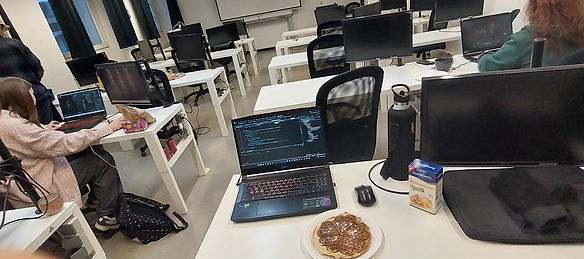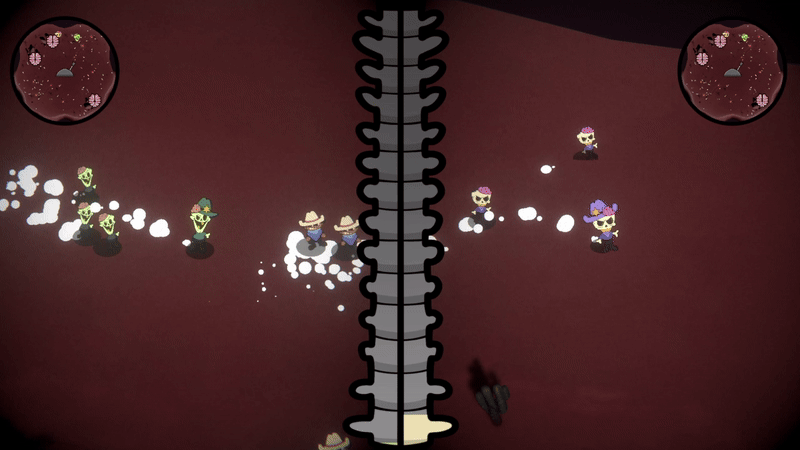Gameplay Programmer
About the project
In this fast paced 1v1 you play two zombified outlaws roaming the American prairie in the 19th century, always on the look out to infest other humans and make them your minions. But it's not about who can build the bigger army, it's about conquering one of the three brains scattered in the open area. You have to be as ruthless as the desert to become the most wanted outlaw EVER!
Project Specifics
Team size: 6 people
Project Time: SEP 2024 - FEB 2025
My Roles: Game Programmer, Project Manager, Game Designer
Tools: Unity, Rider, Miro, Trello
First prototype & evaluation
We needed a good logic for the player horde and a split screen. It turned out to be a bigger challenge than expected, leaning more into AI functionality than we had planned, so for the next steps I knew that I needed to polish the movement and make it more realistic but for now it showed me the prove of fun which was: gathering a bigger horde.
Unity Editor Scripting
Because I had different types of players in my game, and they all had multiple radii for attacking, running away, moving to objects, etc. I wanted to make it clear which gizmos were for which radius in the inspector - so I gave them a specific color. This really helped designing and balancing the game in further steps, even for people not that familiar with Unity.
VFX Graph
This was a new feature of unity I wanted to try out which worked really well and fitting to the art style we have - simple but meaningful.
NPC Movement
Several zombies were controlled by one main zombie, and all the minions had rules about when to attack, when to move with the main zombie and when to avoid obstacles. This was useful for setting priorities and deciding what was more important than other things.
Local Multiplayer Component

Player Registry Manager

Local Multiplayer
One of the most valuable learning experiences for me was diving into local multiplayer development using Unity’s new Input System. I set out to understand the challenges of local multiplayer and quickly realized that managing multiple input devices, player joining, and input bindings requires a thoughtful approach.
Working with the Input System taught me how to:
-
Handle dynamic player joining and device pairing
-
Manage input contexts per player (menus vs. gameplay)
-
Debug and test multiple local players efficiently
Exploring the system’s capabilities, limitations, and best practices gave me a much deeper understanding of gameplay systems and player experience.

My Teamwork
Some of the people I worked with I already knew, some I worked with a bit longer ago and some I never worked with - so that was really interesting for me to deal with. We all a vision of our game so we needed to make sure that we talk a lot to keep out vision clear for everyone. This time I learned how to handle having multiple persons inside the team with a really strong opinion - making sure everyone is heard but also choose an idea.
conclusion
"Individual mechanics don’t mean much on their own - it’s how they connect and interact that creates depth. The real fun comes when players can combine systems in strategic ways and make meaningful choices."
So I worked on a local multiplayer game this time, and I quickly realized that the game gets boring if there is one main strategy that a player can follow, taking away the player's sense of impact
